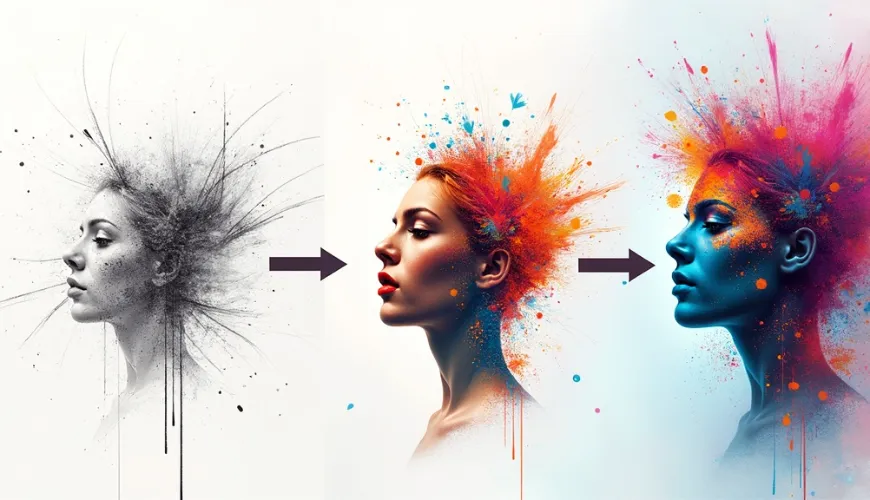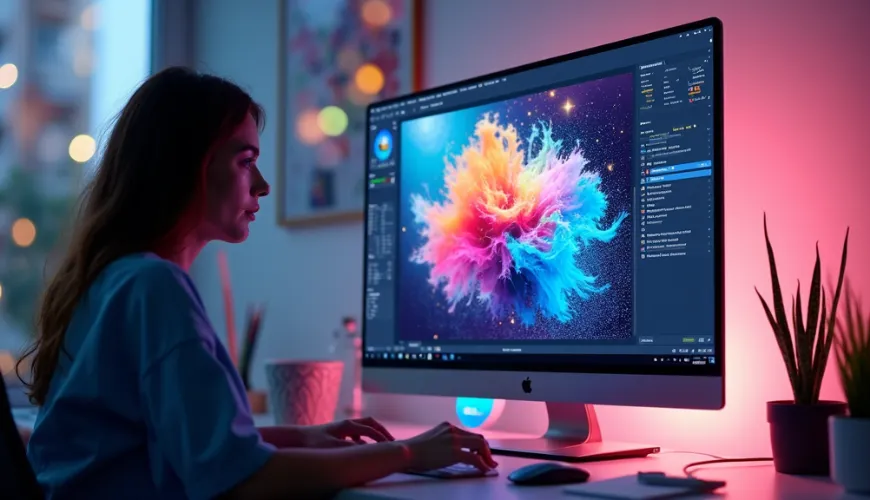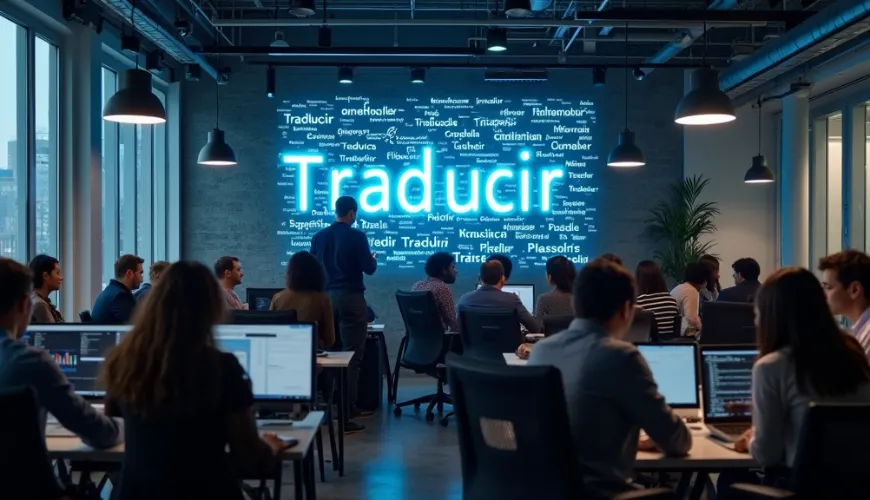TL;DR
Image-to-image AI transforms one image into another using advanced machine learning algorithms. From enhancing sketches to changing styles, it's revolutionizing creative workflows. This guide dives deep into how it works, top tools, real-world uses, and future trends.
What Is Image-to-Image AI and How It Works
Image-to-image AI refers to a class of machine learning models designed to convert one image into another, while retaining certain features or structures of the original. Unlike traditional AI image generation that starts with a text prompt, this approach begins with a base image and transforms it in creative or functional ways.
For example, imagine uploading a rough sketch and turning it into a fully colored anime character. That's image to image AI in action. It doesn't create from scratch—it enhances, reimagines, or stylizes what's already there.
The engine behind this magic often involves a model architecture called GANs (Generative Adversarial Networks) or diffusion models. In particular, diffusion models like Stable Diffusion img2img have become popular for their high-quality results and customizability.
Here's a simplified breakdown of how these models work:
- Input image: You provide an image—this could be a sketch, photo, or digital art.
- Prompt (optional): Add text instructions to guide the transformation.
- Noise injection: The model adds and removes noise to gradually "shape" the transformation.
- Output image: The final result reflects both the original and the creative adjustments.
This technique forms the backbone of many emerging AI image editing solutions we see today.
Popular Image-to-Image AI Tools Worth Trying
Several powerful platforms have entered the image-to-image AI scene, each offering unique features and community support. Here are some widely used tools:
Stable Diffusion (img2img)
Stable Diffusion is a leading AI model that powers many img2img tools. Its image-to-image mode allows you to upload a picture and manipulate it using a prompt and strength slider. Whether you want a photorealistic version, a cartoon style, or a surreal filter, Stable Diffusion can deliver it.
For those who want more control, Stable Diffusion works well with tools like ComfyUI, a visual node-based framework for building complex image workflows. Learn more about how ComfyUI enhances this process on our post at /blog/comfyui-manager.
PixVerse
PixVerse is best known as an AI video generator that turns text or image prompts into short clips; while it can output still frames, its core strength is text-to-video and video-to-video generation, not classic "image-to-image” editing. Artists and designers appreciate its fast rendering speeds and variety of presets. Using a platform like PixVerse makes it easier to generate assets for games, digital art, and marketing materials.
ComfyUI
As mentioned, ComfyUI is a customizable front-end for Stable Diffusion and other models. It simplifies the creation of complex workflows through its drag-and-drop node system. While it's more advanced, even beginners can find value in its visual approach.
Other Notable Mentions
- Artbreeder: Great for blending and morphing portraits.
- Runway ML: Offers video-to-video and image editing tools with a clean UX.
- Playground AI: Friendly for beginners with a wide set of style filters.
Each of these options has its pros and cons, but all use image-to-image AI principles to deliver customizable transformations.
Step-by-Step Guide for Beginners
If you're just starting out, don't worry—using an image-to-image AI generator is easier than you'd think. Here's how you can try it using a simple online tool like Stable Diffusion img2img.
Getting Started
-
Choose a Platform
Use a site like Claila, Hugging Face, or Playground AI that supports img2img features. -
Upload Your Image
This could be anything—a hand-drawn sketch, a selfie, or an old photo you want to stylize. -
Enter a Prompt
Add descriptive text like "cyberpunk style” or "in the style of Van Gogh.” -
Adjust Settings
Play with strength (how much change you want), resolution, or output style. -
Generate and Download
Let the model process your request and download the image when it's ready.
And there you go—your first AI-transformed image!
To dive deeper into creative image editing, check out how artists are using fantasy art generators at /blog/ai-fantasy-art.
Real-World Applications and Creative Ideas
Image to image AI isn't just a gimmick—it's being used in real projects by professionals and hobbyists alike. Here are some exciting ways people are putting it to work:
Creative Use Cases
- Character Design: Turn rough concept sketches into polished characters for games or comics.
- Marketing and Ads: Generate visual variants for A/B testing social media creatives.
- Interior Design Mockups: Take a photo of a room and apply different themes like "modern minimalist” or "rustic farmhouse.”
- Comic or Manga Creation: Convert hand-drawn frames into colored, stylized pages.
- Portrait Reimagination: Transform professional portraits with filters for LinkedIn or personal branding. See how at /blog/ai-linkedin-photo-generator.
Real-Life Example
A freelance illustrator named Maya used img2img to speed up her client work. She'd sketch storyboards, then use Stable Diffusion to apply a watercolor look quickly. This saved her hours of manual coloring per project.
Challenges, Ethics, and Good Practices
As with all AI technologies, AI image editing through image to image AI raises some important questions.
Limitations to Keep in Mind
Image‑to‑image AI is powerful but not flawless. Inconsistent results can occur when the model misreads your intent; you may need several generations to nail the look. Hardware demands also come into play—complex diffusion models run fastest on a dedicated GPU or a paid cloud tier. Finally, beware of style overfitting: some checkpoints lean heavily toward anime, others toward photorealism, so choose (or fine‑tune) a model that matches your brand aesthetic.
Ethical Considerations
- Consent: Don't use portraits of real people without permission.
- Attribution: AI-generated works should be labeled accurately, especially in commercial settings.
- Bias: Like any model trained on large datasets, image-to-image AI can reflect social or cultural biases.
For deeper insights on AI accountability, our post at /blog/ai-detectors-the-future-of-digital-security explores how detection tools are evolving to handle these concerns.
Best Practices
- Always review and refine outputs before publishing.
- Combine multiple tools for better results.
- Stay updated with terms of use for each platform.
What's Next for Image-to-Image AI?
The future of image to image AI looks bright—and busy.
As models become more advanced, we'll likely see real-time image transformations, better context understanding, and even 3D modeling from 2D inputs. Gamma.ai is an AI slide-deck builder that automates presentation design; while not a pure image-to-image tool, it signals how generative design is expanding into new visual workflows—see /blog/gamma-ai.
Another exciting frontier is the fusion of video and img2img tech, allowing for frame-by-frame transformations in creative filmmaking.
Right now, researchers are also working on reducing model bias, improving resolution, and making these tools more accessible to everyday users. Imagine a future where you can sketch a quick logo and instantly get polished outputs tailored for different platforms—this is rapidly becoming a reality.
How Teams and Businesses Can Leverage Image‑to‑Image AI
Marketing teams can spin up multiple ad variations in minutes instead of days. Designers upload a base product shot, apply different seasonal palettes, and instantly have ready‑to‑test creatives.
E‑commerce sellers are using the same workflow to localise imagery for different regions without costly reshoots.
In publishing, editorial staff convert rough storyboards into fully coloured illustrations that match the house style. This shortens the approval loop and keeps daily content pipelines moving at speed.
Enterprise users benefit as well. A cosmetics brand, for instance, fed line‑art sketches of future packaging into an image‑to‑image model and generated photorealistic mock‑ups for internal focus groups. Feedback that once took weeks was gathered in two days.
The common theme: faster iteration, lower design costs, and data‑driven experimentation. When combined with robust governance—clear review checkpoints and watermarks—businesses can scale visual production while staying on brand.
Prompt‑Engineering Tips for Sharper img2img Results
While img2img models can work "out of the box,” well‑crafted prompts dramatically improve consistency. Follow this three‑step formula: (1) Subject + Style, (2) Level of Change, and (3) Negative Cues. For example, "A 1920s Art Deco poster of a jazz band, strong stylization 60 %, --no blurry faces.” Test prompts at different strength values (e.g., 0.25, 0.5, 0.75) to see how much of the original image you want to preserve. Finally, iterate in small increments—changing too many variables at once makes it hard to isolate what worked. This targeted approach not only saves GPU credits but also yields higher‑quality outputs that need less post‑processing.
Ready to Give Image-to-Image AI a Try?
Image to image AI opens up a world of creativity, whether you're a digital artist, marketer, or just curious about what's possible. From sketching ideas to producing final visuals, the tools are easier to use and more powerful than ever.
Unlock your creative potential today—join the Claila community and explore the best tools in one place.



